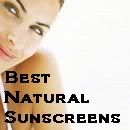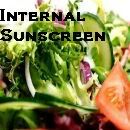
Published in the New England Journal of Medicine, this man's face, especially the left side (which received more sun), is possibly the most compelling argument for wearing sunscreen. Every day, all day, and lots of it (but also being conscious of vitamin D levels). If anyone every doubted that the sun causes skin damage, here is proof right here that it does, especially for individuals who may be more sensitive to the sun's damaging rays.
Read on to find out exactly why the left side of the man's face is dramatically more aged.
Read on to find out exactly why the left side of the man's face is dramatically more aged.
The name for his condition is unilateral dermatoheliosis (one-sided photoaging). Driving with the sun beating down on his face and arm exposed the patient to damaging UVA rays for hours each day, just as if he had been lying on a beach with that skin exposed. Even with the window closed, UVA rays can penetrate window glass if not tinted enough to protect passengers inside the vehicle.
The doctor's orders for McElligott? Sun protection, topical retinoids, and skin cancer monitoring. Car windows can also be tinted to protect against harmful UV rays.
How dangerous is one-sided photoaging?
Sun worshippers pay a price for enjoying those drives in the sunshine, experts say. Researchers at the University of Washington studied cancer cases tracked by the U.S. government. Their findings, published in the American Academy of Dermatology, showed that when melanoma affected one side of a person’s body, it was on the left side—the driver’s side—52 percent of the time. Merkel cell cancers, another type of skin cancer, appeared on the left side in 53 percent of cases.
This isn’t the first evidence that motoring in the sun might be linked to skin cancer. A 2010 study of 1,047 skin cancer patients at the Saint Louis University School of Medicine, published in the same journal, came to the same conclusion: in both men and women, more skin cancers were found on the left side of the body than the right. And in Australia, where people drive on the right-hand side of the road, drivers’ right arms and right sides of their faces get the sun exposure. A 1986 study found that a majority of precancerous growths among Australian men occurred on their right sides.
Does tinted glass protect us?
Tinting window glass does afford some protection; compared to untinted glass, it admits 3.8 percent fewer UVA rays. The most protective color is gray, which admits only 0.9 percent of UVA light, compared to 62.8 percent of UVA light admitted through clear glass. (UVB rays don’t penetrate glass to a dangerous degree.)
But tinted glass can pose visibility issues. “People who are considering tinting their windows should take their car to a professional auto detailing shop, in order to ensure that the tinting meets the federally mandated 70 percent of minimum visible light transmittance through the windshield,” advises the American Academy of Dermatology. Auto glass tinting can be regulated by state law, and professional detailers will be aware of those guidelines.
Thanks for reading! What do you think?
You Might also Like-
You Might also Like-



Filed under Beauty and General Health
Please leave a comment below
________________________________________________________


I had seen your post, it seems interesting and informative. Thank you for sharing this, please visit our blog also Beauty Blog
BalasHapus